How to use behavior attributes to build smarter segments
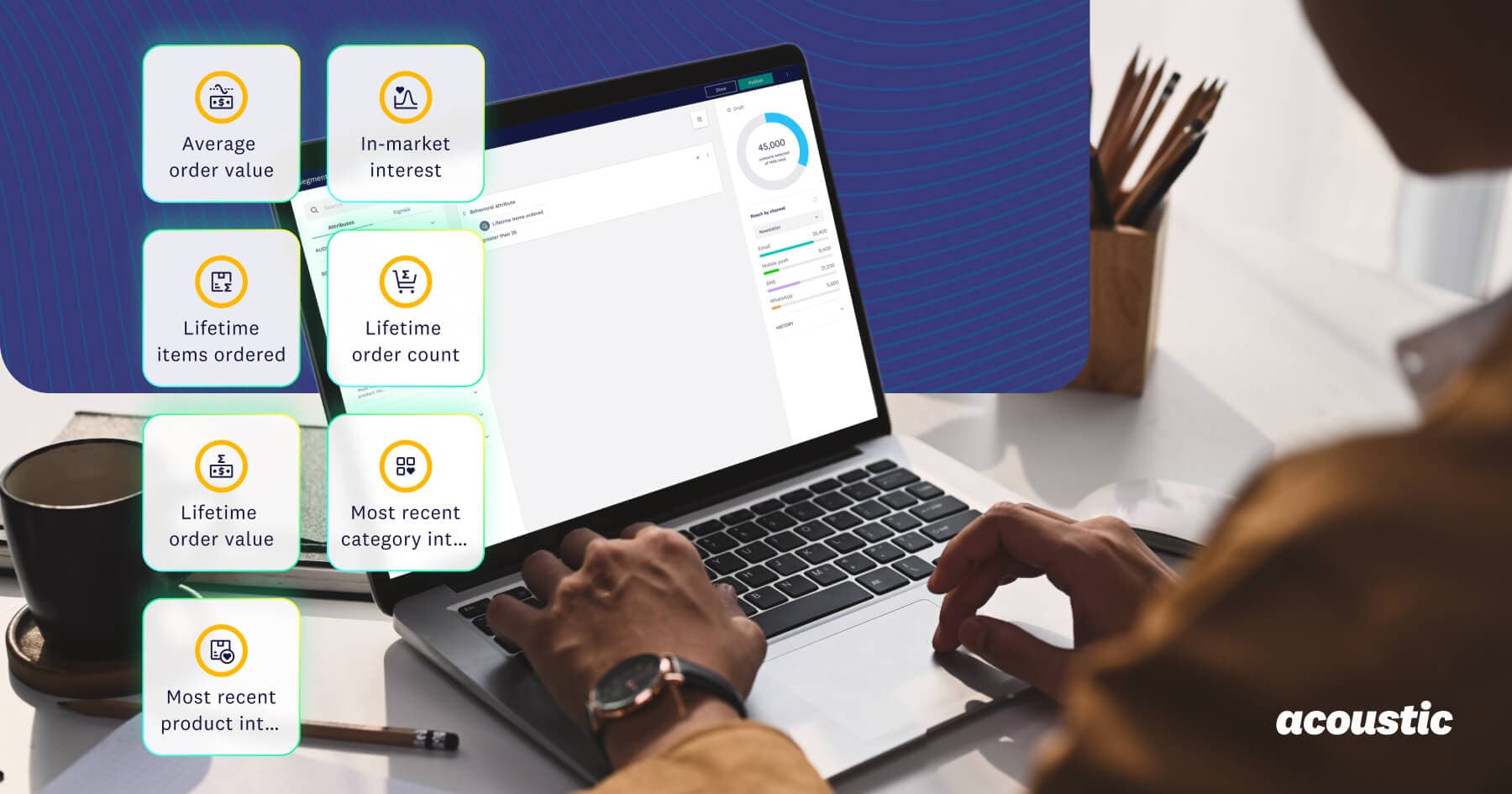
If you’re a marketer who’s ever wondered “Are we even targeting the right customers,” you’re not alone.
Many marketing teams begin with segmentation based on surface-level engagement, like opens, clicks, and page views, but quickly hit a ceiling since these behaviors only scratch the surface of what drives conversion. What’s often missing is a deeper understanding of a customer’s intent and browsing patterns.
That’s where behavior attributes come in. Modern MarTech platforms like Acoustic Connect help marketers go beyond engagement by making it easy to segment based on how often someone buys, how much they spend, and how they interact with your products. You also don’t need spreadsheets, custom queries, or help from IT to get started.
Below, we’ll walk through four key behavior attributes you can use to build smarter segments, personalize more effectively, and improve your campaign performance.
Lifetime order value
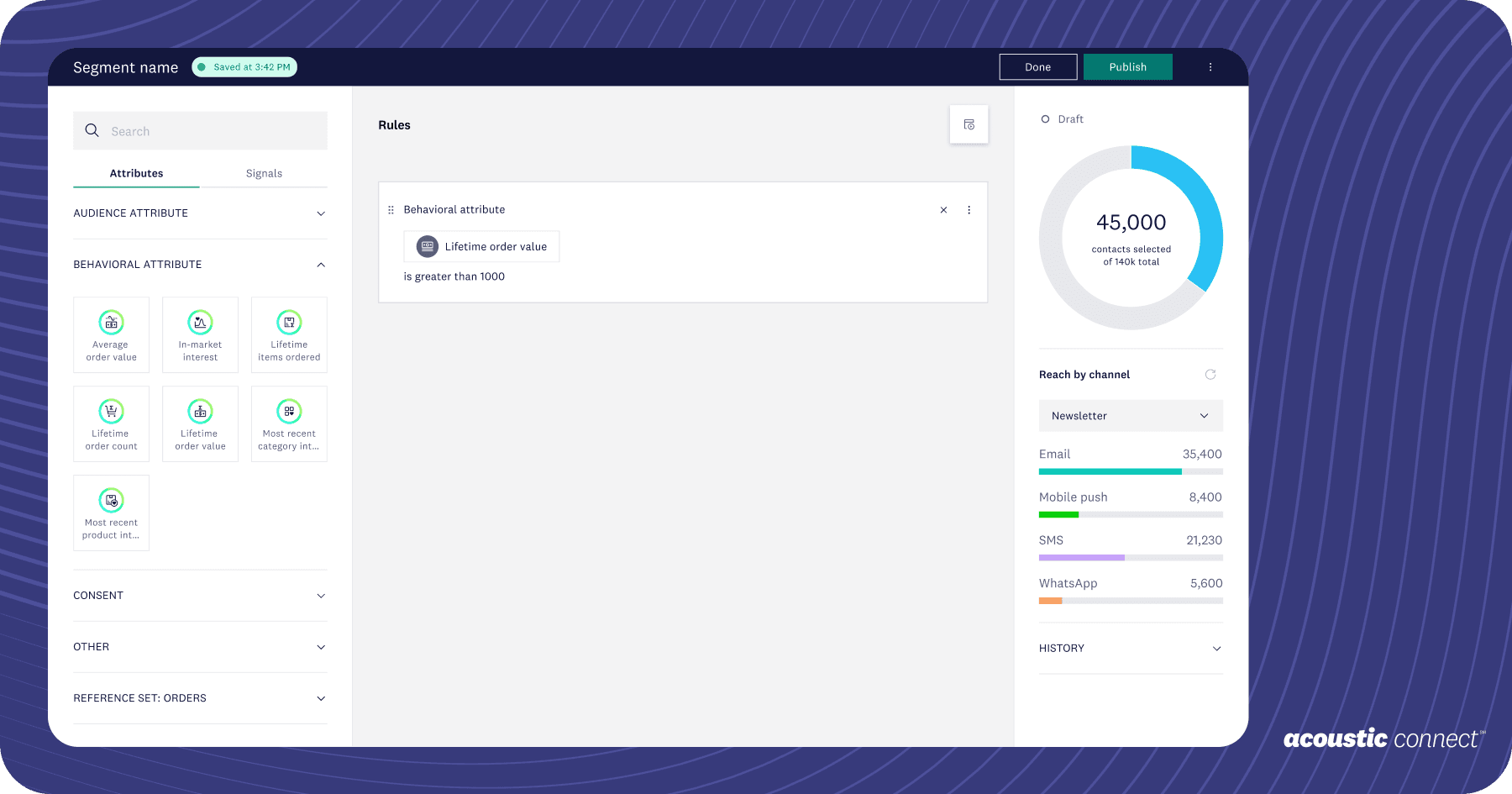
What it tells you: Total amount generated from all the contact's orders
Why it matters: It highlights your highest-value customers, the ones who are most likely to spend again and respond to premium offers.
How to use it: Filter by “Lifetime order value > $500” and create a segment of top spenders. Use this audience for early access offers, loyalty rewards, or exclusive promotions.
Example: A luxury hotel chain identifies guests with high lifetime booking value and offers them early access to new resort packages. These guests receive personalized offers for premium suites before they’re released to the general public, resulting in higher booking rates and stronger retention.
Lifetime order count
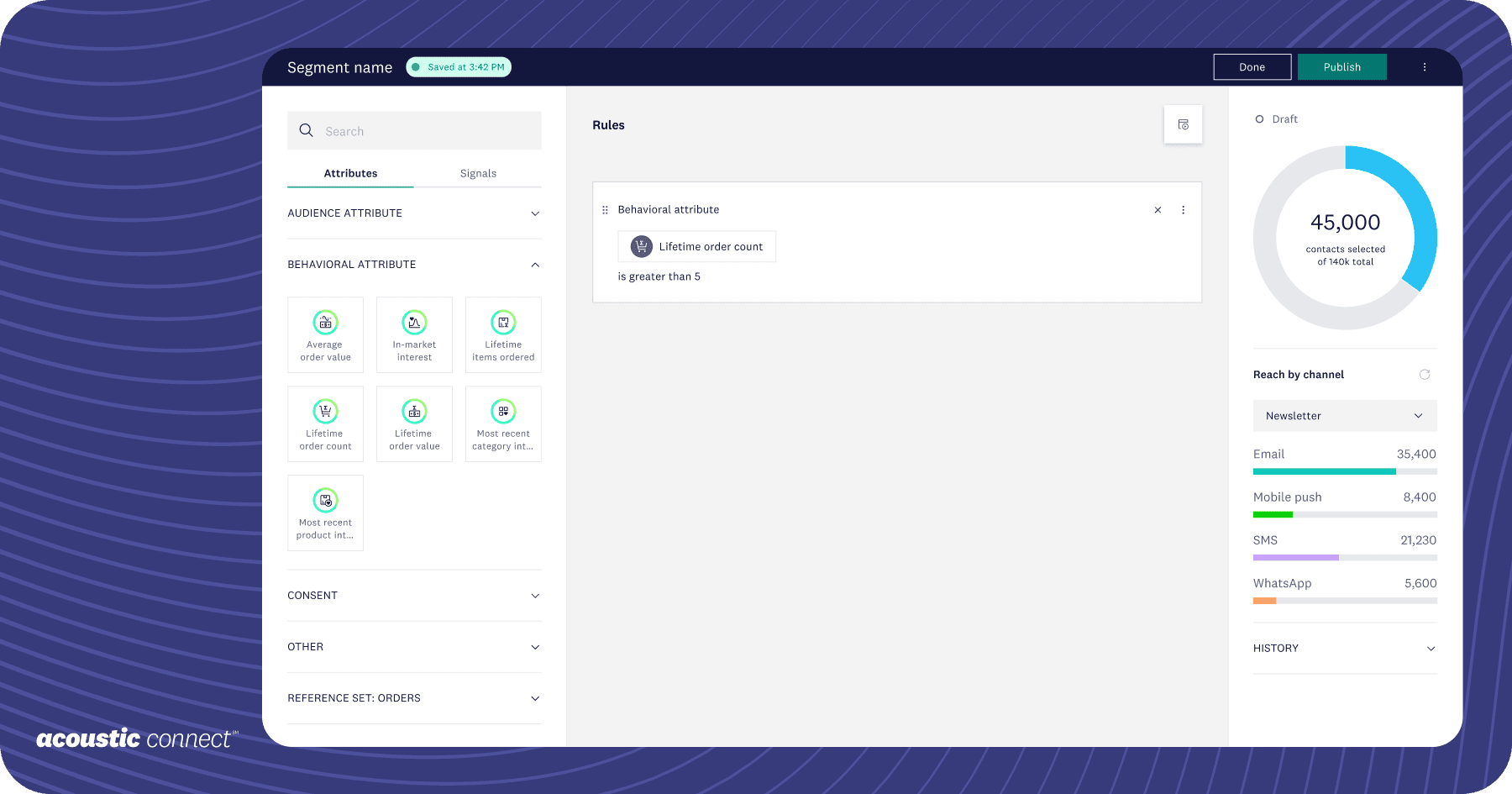
What it tells you: Total number of orders made by a contact
Why it matters: Frequency signals loyalty — consistent purchasers are highly engaged, even if their orders are small.
How to use it: Segment by “Lifetime order count ≥ 10” to identify repeat buyers and trigger milestone messages, offer loyalty perks, or launch referral campaigns.
Example: A fitness brand segments members who have completed 10 classes and sends a message celebrating the milestone with a free class when they purchase a 10-class package. These members are also offered an incentive to refer a friend, increasing both retention and acquisition.
Average order value
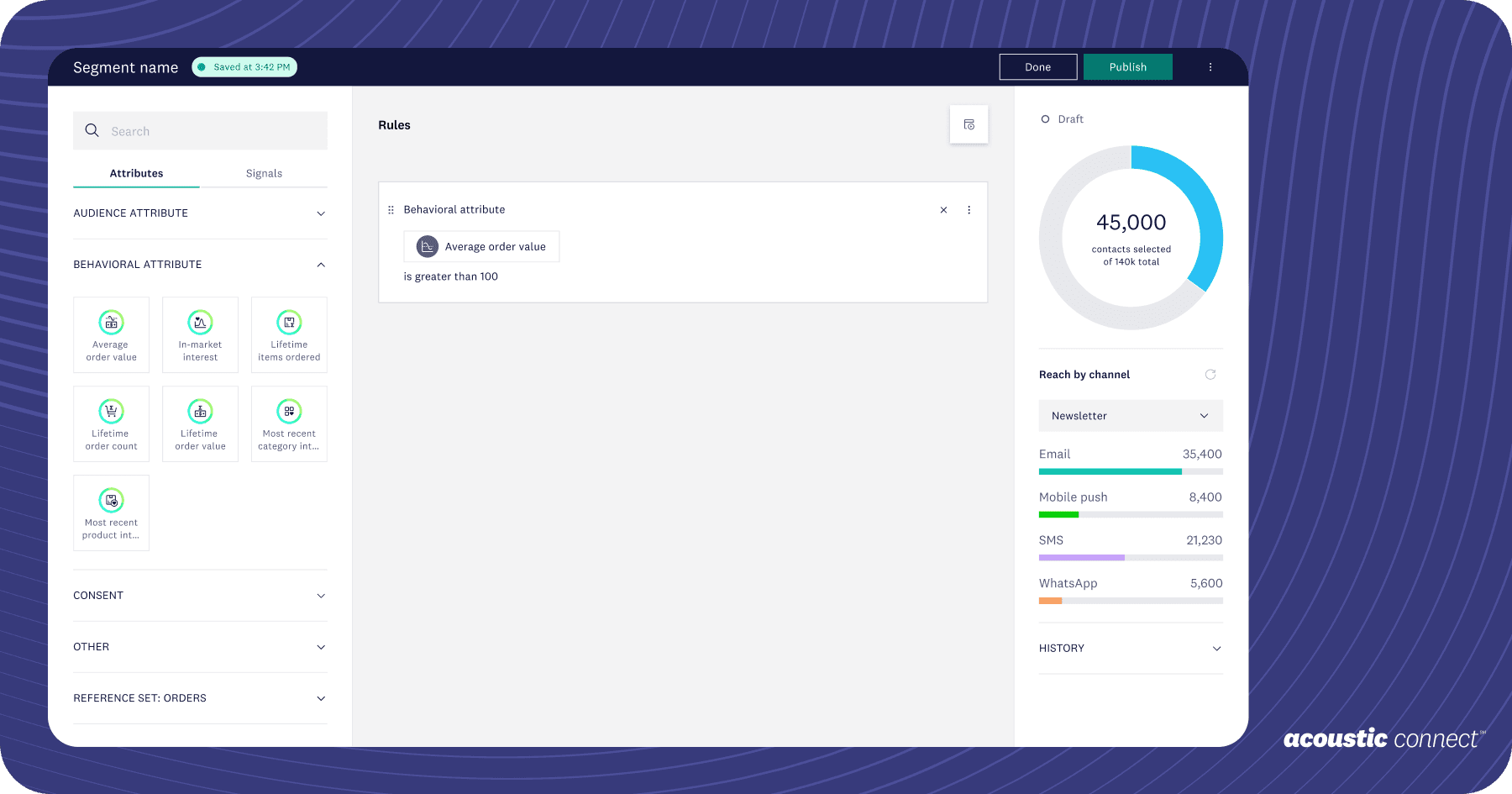
What it tells you: Typical amount a customer spends per order
Why it matters: Understanding spending habits lets you present the right offers to the right audience.
How to use it: Use a rule like “Average order value ≥ $100” to surface high-spending customers and target them with curated recommendations or incentives.
Example: A retail brand selling wellness products targets customers with a high average order value and promotes a personalized product bundle with a bonus item or free shipping. These shoppers are already inclined to buy more, and the added value helps increase basket size.
Lifetime items ordered
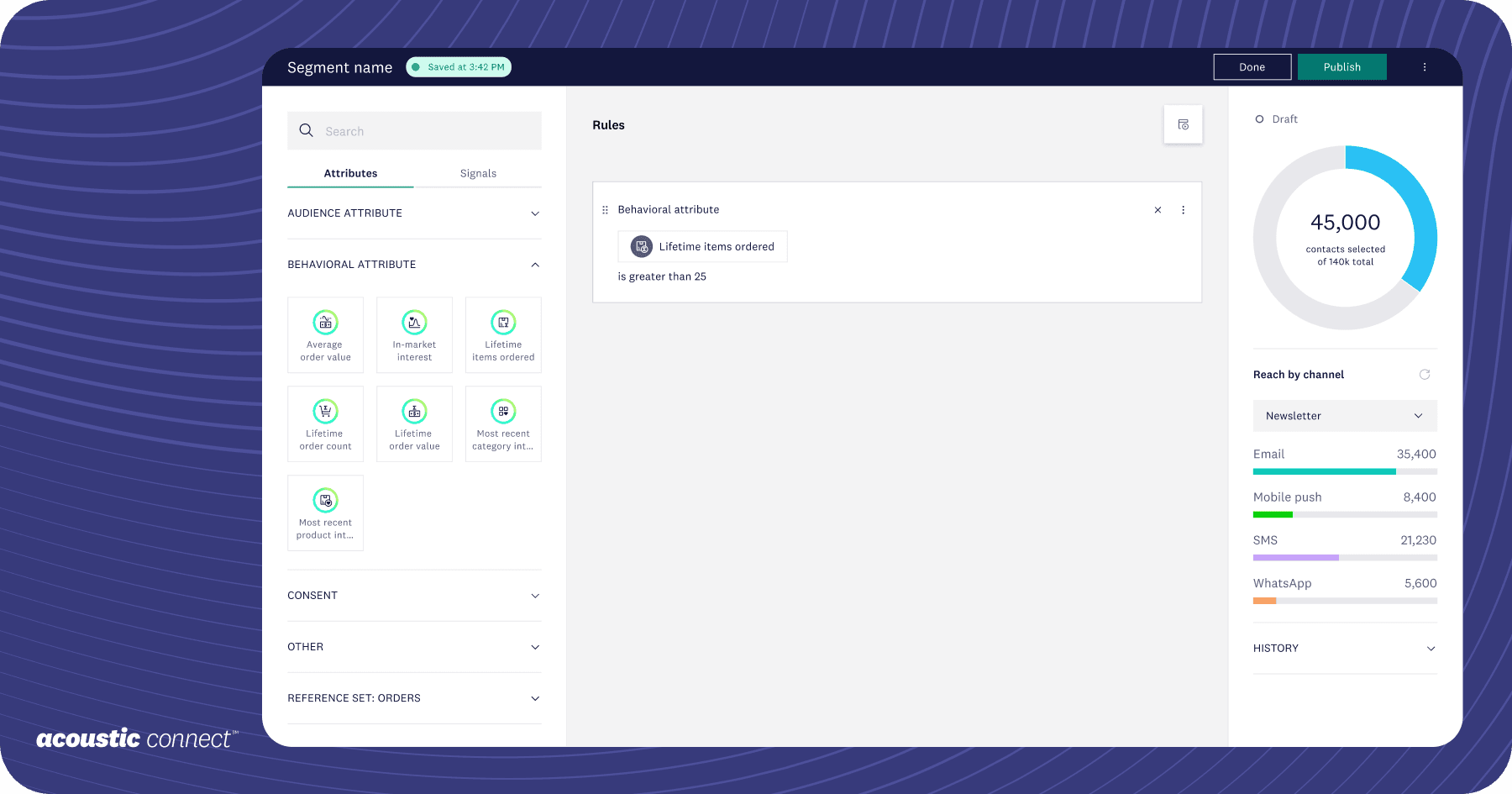
What it tells you: Total number of items the contact has ordered so far
Why it matters: A high item count shows ongoing interest in your brand and these customers are often more open to repeat purchases as well as new product suggestions.
How to use it: Create a segment like “Lifetime items ordered ≥ 10” to target your most active buyers. Use it to promote related product categories, highlight new arrivals, or encourage reorders based on their purchase history.
Example: A retail brand identifies customers who have ordered 10 or more items and recently searched their website for “white sneakers.” They automatically send a message like, “Still looking for the perfect pair? Your size is almost gone!” This message combines purchase activity with real-time interest for a relevant, well-timed follow-up.
Why combining behavior attributes matters
Each behavior attribute provides a useful lens on your customer, but when you combine them, you get a clearer picture of both long-term loyalty and current intent. Instead of asking “Who clicked?” or “Who browsed,” you can now ask more strategic questions like:
- Who buys often and spends the most?
- Who’s likely to convert and just showed intent?
- Who should I prioritize right now?
These more nuanced segments help you focus your messaging and deliver relevant content to the people most likely to respond.
Here’s an example of how combining behavior attributes might look in practice:
- Lifetime order count ≥ 5
- Average order value ≥ $75
- Last activity within 7 days
- Cart status = abandoned
This segment helps you identify customers who are not only loyal and high spenders, but also recently active and showing intent to purchase. You can use this segment to trigger a tailored follow-up campaign across email, SMS, or WhatsApp, and reach the right customer with the right message at the right time.
Ready to make segmentation work for you?
You’ve already put in the effort to gather customer data and create meaningful campaigns. Behavior-based segmentation is the next step in making that data more actionable and your targeting more effective.
With Acoustic Connect, you can create high-performing segments based on customer behavior and intent — without needing SQL expertise or support from IT. Whether you're looking to improve conversions, boost retention, or better prioritize your audiences, these attributes give you a strategic edge.
Explore our segmentation capabilities to learn more about how you can create higher-performing segments with less effort or book a demo to see how easily you can use these attributes in your next campaign.